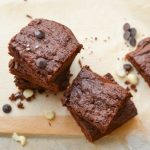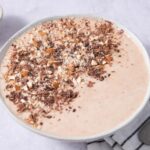6 Ways You’re Sabotaging Your Low Carb Diet

If you’re new to a low carb diet, you’re probably excited to finally eat all of the foods you’ve denied yourself for years: red meat, butter, cheese, bacon. Anyone eating a ketogenic (keto) diet knows the general rule to keep daily carbohydrates under 50g, or more for those who are more insulin sensitive. But under the “low carb” banner, there are plenty of foods or practices that can derail your efforts, or worse, sabotage them altogether.
1. Not Getting Enough Electrolytes
You often hear people embarking on a ketogenic diet talk about the “keto flu.” They feel weak, lightheaded, nauseated, and dizzy as their bodies adjust from burning sugar to burning fat for fuel. It’s miserable enough to make people quit altogether, but it’s also totally manageable.
The Solution: Salt
A simple over-the-counter electrolyte solution is an easy fix to the keto flu, but surprisingly, so is simply adding salt to your diet, and lots of it. While salt gets a bad rap, it’s been highly maligned and is, in fact, important for health. So if you’re feeling lightheaded on your keto diet, do yourself a favor: drink some electrolytes, broth, or even pickle juice.
2. Nuts
In our excitement to eat all the foods we used to avoid, we often throw nuts or nut butters into the mix. And while a small amount of either is fine on a low carb diet, nuts are one of the easiest snacks to overindulge in and, sad to say, not actually that low carb.
A typical serving of nuts breaks down to 24 almonds, 18 medium cashews, 35 peanuts, or 15 pecan halves. That’s roughly a handful. Nuts are calorically dense, and even though you typically don’t need to watch calories on a low carb diet, it still is possible to over-consume a food that is healthy in small amounts. That single serving of almonds has 3 net carbs in it (typically more if the nuts have some kind of flavor or coating). If you’re only eating that single serving, no problem. But if you’re like most of us, a single handful of nuts is followed by a few more handfuls. In the matter of a few minutes, you could have eaten most of your daily carbs while believing that you were snacking in healthy moderation.
The Solution: Portion Control
No one likes having to return to the world of portion control when eating low carb, but it’s the best way to snack responsibly. If you’re going to include nuts in your diet, portion them out beforehand so you won’t be tempted to over-consume. Too much of even a relatively good thing could still stall or sabotage your efforts.
3. “Keto Treats”
Keto bars, keto snacks, and keto treats are all easy, convenient ways to manage a low carb lifestyle, but many of these treats can still spike your insulin. They often contain seed oils or artificial sweeteners.
The Solution: Eat Clean
The good news is that there are quality keto-friendly shakes, bars, and snacks on the market, you just have to check the ingredients. Make sure the fats and proteins are from fruit and animal sources and that the non-nutritive sweeteners don’t impact insulin. Acceptable forms of natural sugar-free sweeteners include Stevia, monk fruit, and erythritol.
4. Not Getting Enough Fat
After decades of being told that dietary fat made us fat, it can be hard to embrace the fact that healthy fats are essential for you, especially when the misconception persists. Not getting enough fat–especially on a low carb diet–leads to hunger that might tempt you to indulge in foods you should avoid.
The Solution: Just Add Butter
In nature, protein always comes with fat, typically at a 1:1 ratio. So if you find yourself eating too many lean meats, slather them in olive oil, butter, or other healthy fats to make sure you’re getting enough fat to stay satisfied, get into ketosis, and burn your own fat for fuel. After all, you burn what you eat.
5. Carb Creep
Our modern diet is packed with sugar and unnecessary carbs. Everything from beef jerky to sunflower seeds to ketchup to a simple vinaigrette dressing has sugar added to it, and each of these can have enough carbs to kick a person out of ketosis pretty quickly.
The Solution: Track your macros
If you’re maintaining your desired weight and/or health outcomes, this is an unnecessary step. But if you’ve recently started gaining weight on a ketogenic diet, tracking everything you eat for a few days can be a big help. You may be surprised to find how many carbs have sneaked their way into your diet.
6. Not Getting Enough Sleep
Sleep is essential for any diet, and sadly, not getting enough of it increases insulin resistance. On a ketogenic diet, a single night of poor sleep affects the body’s ability to get into ketosis and stay there.
The Solution: Prioritize Those ZZZs
A consistent schedule and routine can make a difference in your sleep. Keep the room cool and lower the lights in the evening to increase your body’s production of melatonin and promotes healthy sleep. Steering clear of devices at least a half hour before bedtime does, as well. Avoid eating in the evening to make sure that your body can stay cool while you rest.
Eating a low carbohydrate diet is an excellent choice for improving your health. With a little extra care, you can avoid some of the common pitfalls that will sabotage your diet and instead, you can eat your way to a healthier lifestyle.
References
- https://gethlth.com/how-to-avoid-the-keto-flu/
- https://www.dietdoctor.com/low-carb/keto/supplements
- https://gethlth.com/are-you-eating-enough-salt/
- Dreher ML, Maher CV, et al. The traditional and emerging role of nuts in healthful diets. Nutr Rev. 1996;54:241-245.
- https://gethlth.com/artificial-sweeteners-and-insulin/
- Astrup, A., Magkos, F., Bier, D. M., Brenna, J. T., de Oliveira Otto, M. C., Hill, J. O., King, J. C., Mente, A., Ordovas, J. M., Volek, J. S., Yusuf, S. and Krauss, R. M. (2020) Saturated Fats and Health: A Reassessment and Proposal for Food-Based Recommendations: JACC State-of-the-Art Review. Journal of the American College of Cardiology. 76, 844-857
- https://gethlth.com/fats-that-help-fats-that-harm/
- Donga E, van Dijk M, van Dijk JG, Biermasz NR, Lammers GJ, van Kralingen KW, Corssmit EP, Romijn JA. A single night of partial sleep deprivation induces insulin resistance in multiple metabolic pathways in healthy subjects. J Clin Endocrinol Metab. 2010 Jun;95(6):2963-8. doi: 10.1210/jc.2009-2430. Epub 2010 Apr 6. PMID: 20371664.
- https://www.cdc.gov/sleep/about_sleep/sleep_hygiene.html
- Gooley JJ, Chamberlain K, Smith KA, Khalsa SB, Rajaratnam SM, Van Reen E, Zeitzer JM, Czeisler CA, Lockley SW. Exposure to room light before bedtime suppresses melatonin onset and shortens melatonin duration in humans. J Clin Endocrinol Metab. 2011 Mar;96(3):E463-72. doi: 10.1210/jc.2010-2098. Epub 2010 Dec 30. PMID: 21193540; PMCID: PMC3047226.
- Pham HT, Chuang HL, Kuo CP, Yeh TP, Liao WC. Electronic Device Use before Bedtime and Sleep Quality among University Students. Healthcare (Basel). 2021 Aug 24;9(9):1091. doi: 10.3390/healthcare9091091. PMID: 34574865; PMCID: PMC8466496.
This article is for informational and educational purposes only. It is not, nor is it intended to be substitute for professional medical advice, diagnosis, or treatment and should never be relied upon for specific medical advice.



















